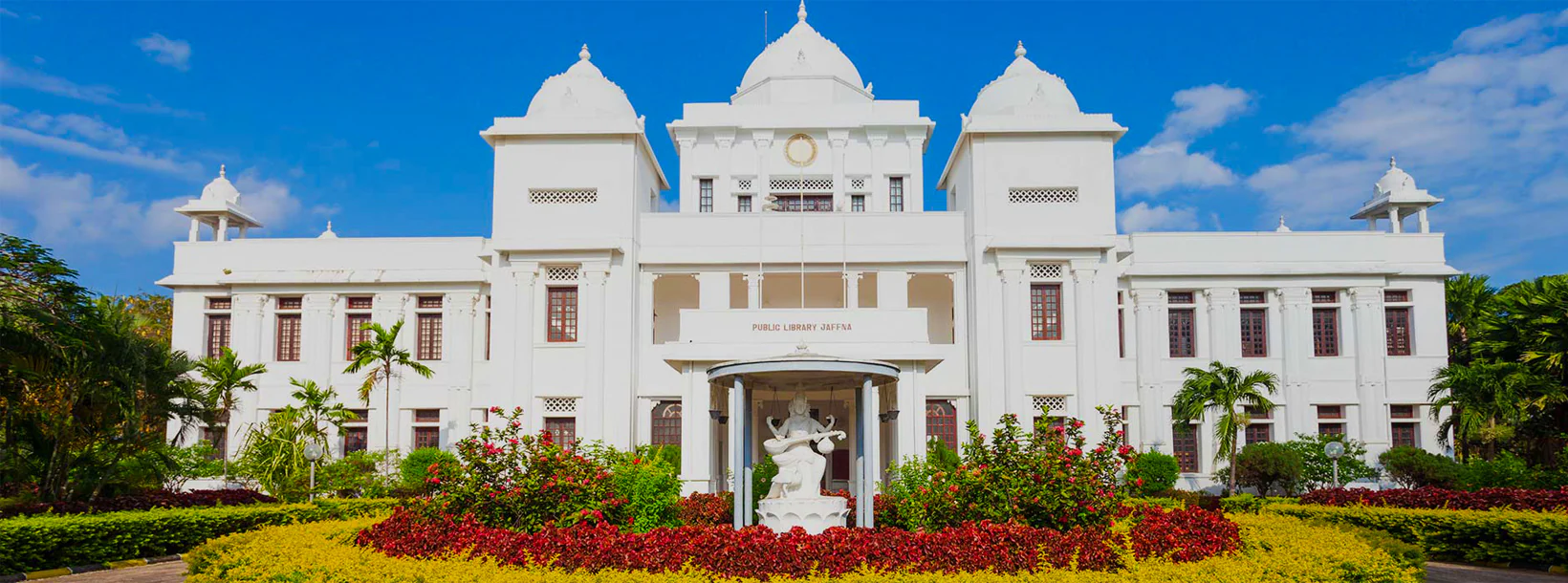
Jaffna City
Jaffna is the main city of Jaffna peninsula in the northernmost district of Sri Lanka. Comfortable intercity busses from Colombo take 10-12 hours to reach the city of Jaffna.
Jaffna Beach
Jaffna Beach, located in the northern region of Sri Lanka, offers a unique and tranquil coastal experience. Known for its untouched natural beauty and rich cultural heritage, Jaffna Beach is a hidden gem that provides an authentic and serene getaway for travelers seeking a more off-the-beaten-path destination.
Pristine and Secluded Beaches
Jaffna Beach features pristine stretches of golden sand and clear, calm waters. The beaches are less crowded compared to other popular Sri Lankan beaches, providing a peaceful environment for swimming, sunbathing, and enjoying leisurely walks along the shore.
Cultural and Historical Significance
The Jaffna region is rich in Tamil culture and history. Visitors can explore the local heritage through the ancient temples, colonial architecture, and vibrant markets. Key sites include the Nallur Kandaswamy Temple and the Jaffna Fort, which offer insights into the region's historical and cultural significance.
Island Hopping
The Jaffna Peninsula is home to several small islands, each with its own unique charm. Kayts Island and Delft Island are popular choices for island hopping, where visitors can explore beautiful beaches, historic ruins, and traditional villages. Delft Island, in particular, is known for its wild ponies and ancient Dutch fortifications.
Seafood and Local Cuisine
Jaffna is renowned for its flavorful Tamil cuisine, with a focus on fresh seafood. Local specialties include Jaffna crab curry, fish curry, and string hoppers. The region’s cuisine offers a unique taste of Sri Lankan culinary traditions, with spicy and aromatic dishes that reflect the local culture.
Traditional Fishing Villages
The area around Jaffna Beach is dotted with traditional fishing villages. Visitors can experience local fishing practices, interact with fishermen, and observe daily life in these coastal communities. The fishing villages offer a glimpse into the traditional livelihoods that sustain the region.
Wildlife and Nature
Jaffna is also known for its natural beauty and wildlife. The Jaffna Lagoon and surrounding wetlands provide habitat for various bird species and are ideal for birdwatching. The region’s mangroves and coastal ecosystems contribute to its rich biodiversity.
Best Time to Visit:
The best time to visit Jaffna Beach is from May to September, when the weather is relatively dry and warm, making it ideal for beach activities and exploring the local attractions. The region's climate can be quite hot and humid, so this period offers more comfortable conditions for travel.
About Jaffna District
Jaffna is the capital city of the Northern Province, Sri Lanka. 85% of the populations of the Jaffna and Kilinochchi districts are Hindus. The Hindus follow the Saivite tradition. The remainders are largely Roman Catholics or Protestants, some of whom are descendants of colonial settlers, known as Burghers. The Tamils are divided along caste lines, with the farmer-caste Vellalar forming the majority. Sea products, red onion, and tobacco are the main products in Jaffna.
Jaffna is home to beautiful Hindu temples. An Old Dutch Fort still stands well preserved within which is an old Church. Another example of Dutch architecture is the King's House. No visit to Jaffna is complete without tasting the exquisite Jaffna mango, reputed for its sweetness. About 3 km away is the majestic Nallur Kandaswamy Temple, home to the largest religious festival in Jaffna. The Kayts Harbour is an ancient ship docking site in the Jaffna region.
About Northern Province
The Northern Province is one of the 9 provinces of Sri Lanka. The provinces have existed since the 19th century but they didn't have any legal status until 1987 when the 13th Amendment to the 1978 Constitution of Sri Lanka established provincial councils. Between 1988 and 2006 the province was temporarily merged with the Eastern Province to form the North-East Province. The capital of the province is Jaffna.
Northern Province is located in the north of Sri Lanka and is just 22 miles (35 km) from India. The province is surrounded by the Gulf of Mannar and Palk Bay to the west, Palk Strait to the north, the Bay of Bengal to the east and the Eastern, North Central and North Western provinces to the south.The province has a number of lagoons, the largest being Jaffna Lagoon, Nanthi Kadal, Chundikkulam Lagoon, Vadamarachchi Lagoon, Uppu Aru Lagoon, Kokkilai lagoon, Nai Aru Lagoon and Chalai Lagoon.Most of the islands around Sri Lanka are to be found to the west of the Northern Province. The largest islands are: Kayts, Neduntivu, Karaitivu, Pungudutivu and Mandativu.
The Northern Province's population was 1,311,776 in 2007. The majority of the populations are Sri Lankan Tamils, with a minority Sri Lankan Moor and Sinhalese population. Sri Lankan Tamil is the major language spoken in the province by the vast majority of the population. The other language spoken is Sinhala by 1 percent of the population. English is widely spoken and understood in the cities.














